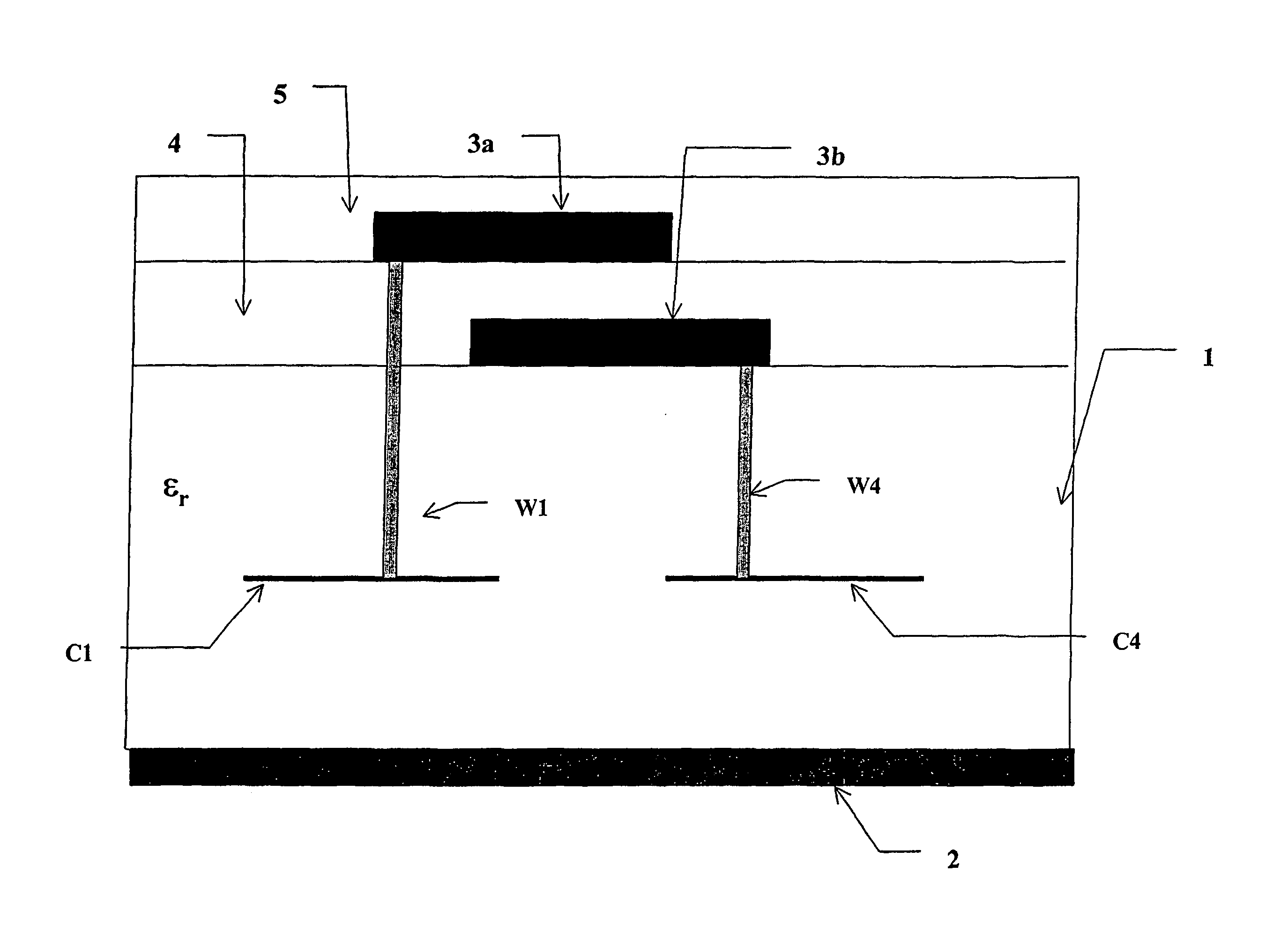Coupling device using buried capacitors in multilayered substrate
a capacitor and multi-layer substrate technology, applied in semiconductor devices, semiconductor/solid-state device details, waveguides, etc., can solve the problems of compromising the circuit area, affecting the performance of the coupler, and requiring a large area of occupation
- Summary
- Abstract
- Description
- Claims
- Application Information
AI Technical Summary
Benefits of technology
Problems solved by technology
Method used
Image
Examples
Embodiment Construction
[0053]Subsequently, the present invention will be described in detail with reference to the accompanying drawings.
[0054]FIG. 4 shows an equivalent circuit diagram of a coupling device according to the present invention. The arrangement is rather similar to the circuit arrangement as explained as an example with reference to FIG. 1. Thus, the same reference signs denote similar and / or identical components and a repeated explanation thereof is dispensed with.
[0055]The difference between the equivalent circuits shown in FIG. 1 and FIG. 4 resides in that in the circuit according to FIG. 4, grounded capacitors C1 through C4 are connected at the output ports P1 to P4, respectively. With the values of capacitance of the capacitors C1 to C4 being properly chosen, the phase velocity mismatch between odd and even modes can be compensated for, i.e. equalized. The proper values of capacitance of the capacitors C1 to C4 depend on the degree of velocity mismatch. These proper values are determine...
PUM
 Login to View More
Login to View More Abstract
Description
Claims
Application Information
 Login to View More
Login to View More - R&D
- Intellectual Property
- Life Sciences
- Materials
- Tech Scout
- Unparalleled Data Quality
- Higher Quality Content
- 60% Fewer Hallucinations
Browse by: Latest US Patents, China's latest patents, Technical Efficacy Thesaurus, Application Domain, Technology Topic, Popular Technical Reports.
© 2025 PatSnap. All rights reserved.Legal|Privacy policy|Modern Slavery Act Transparency Statement|Sitemap|About US| Contact US: help@patsnap.com



